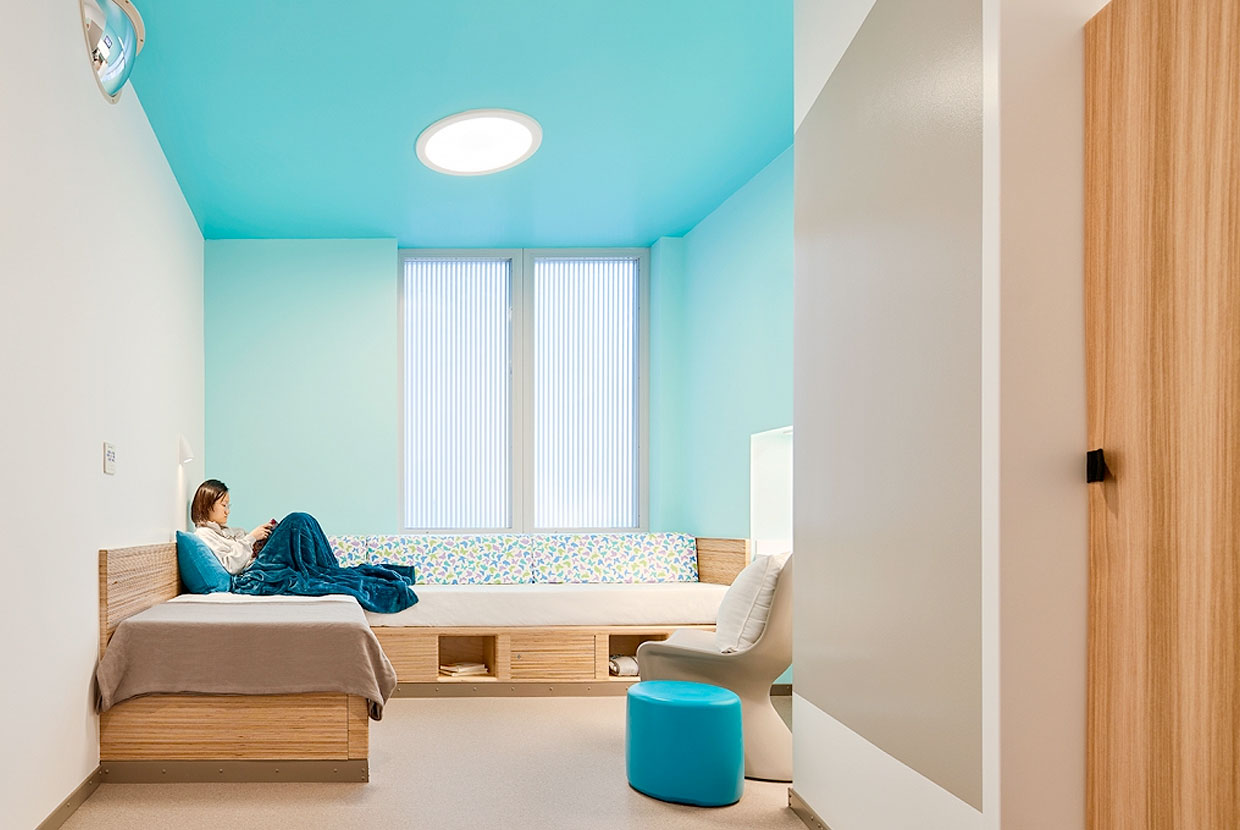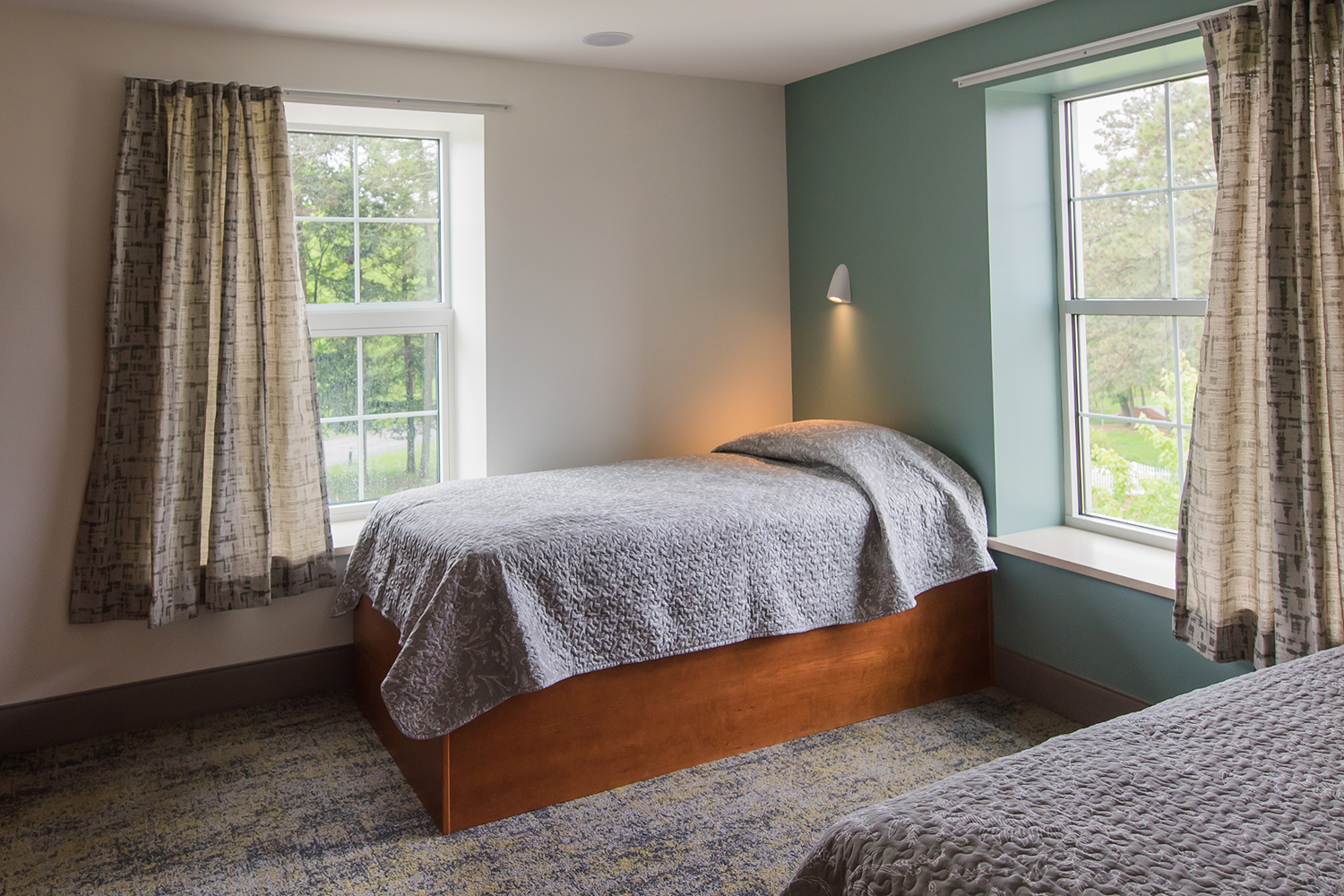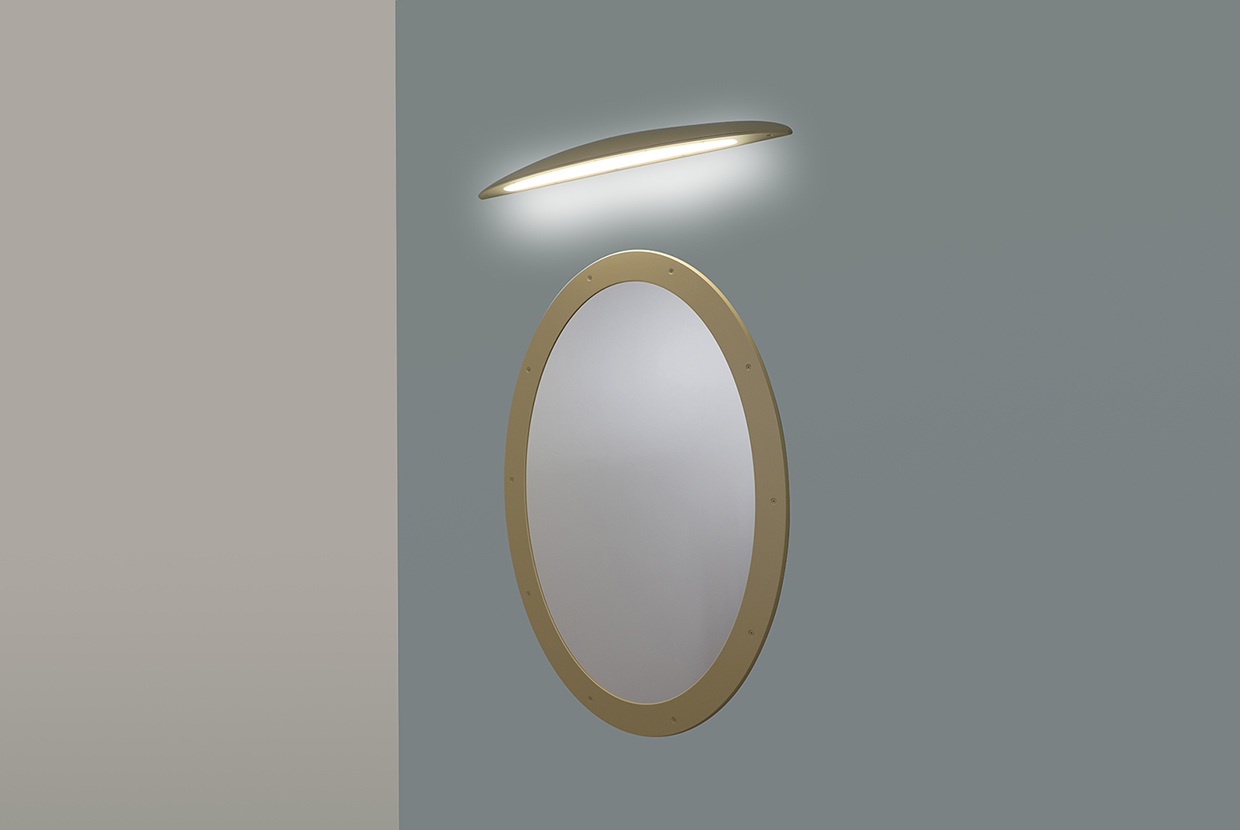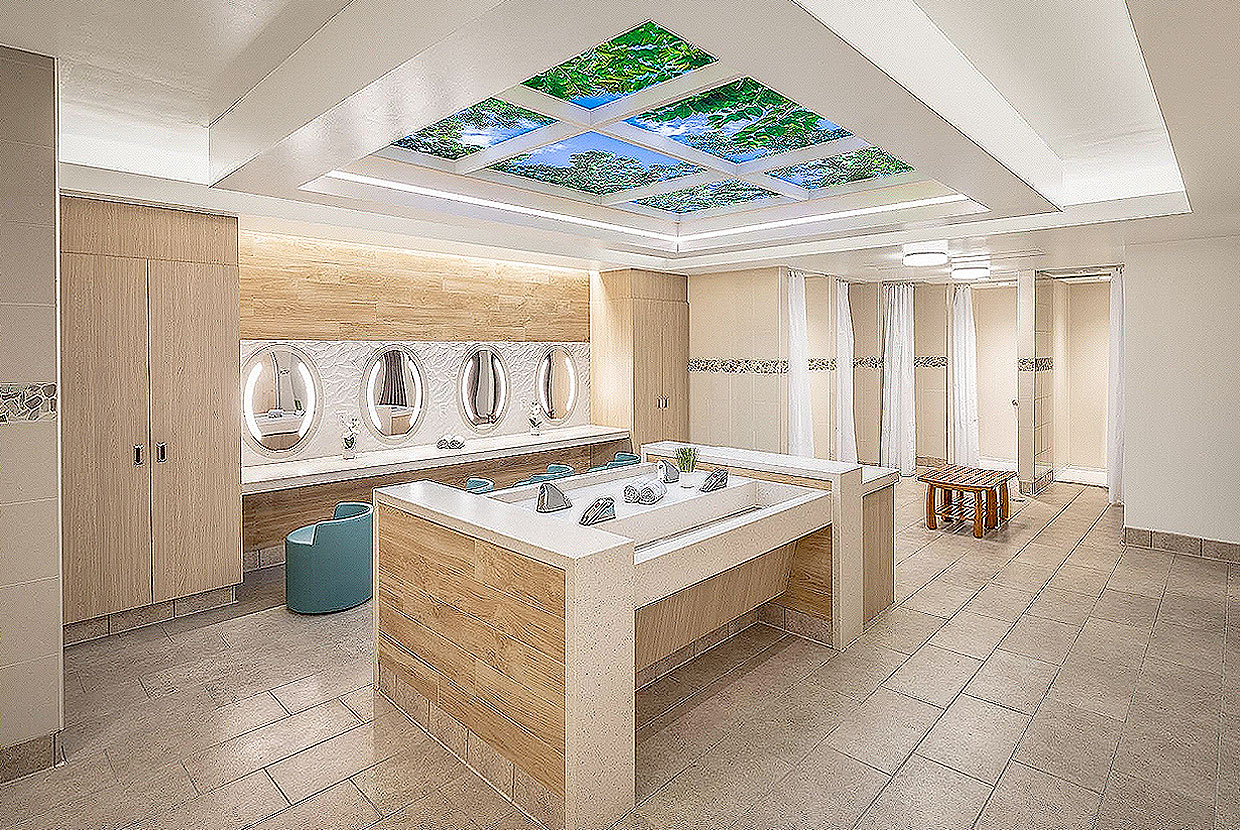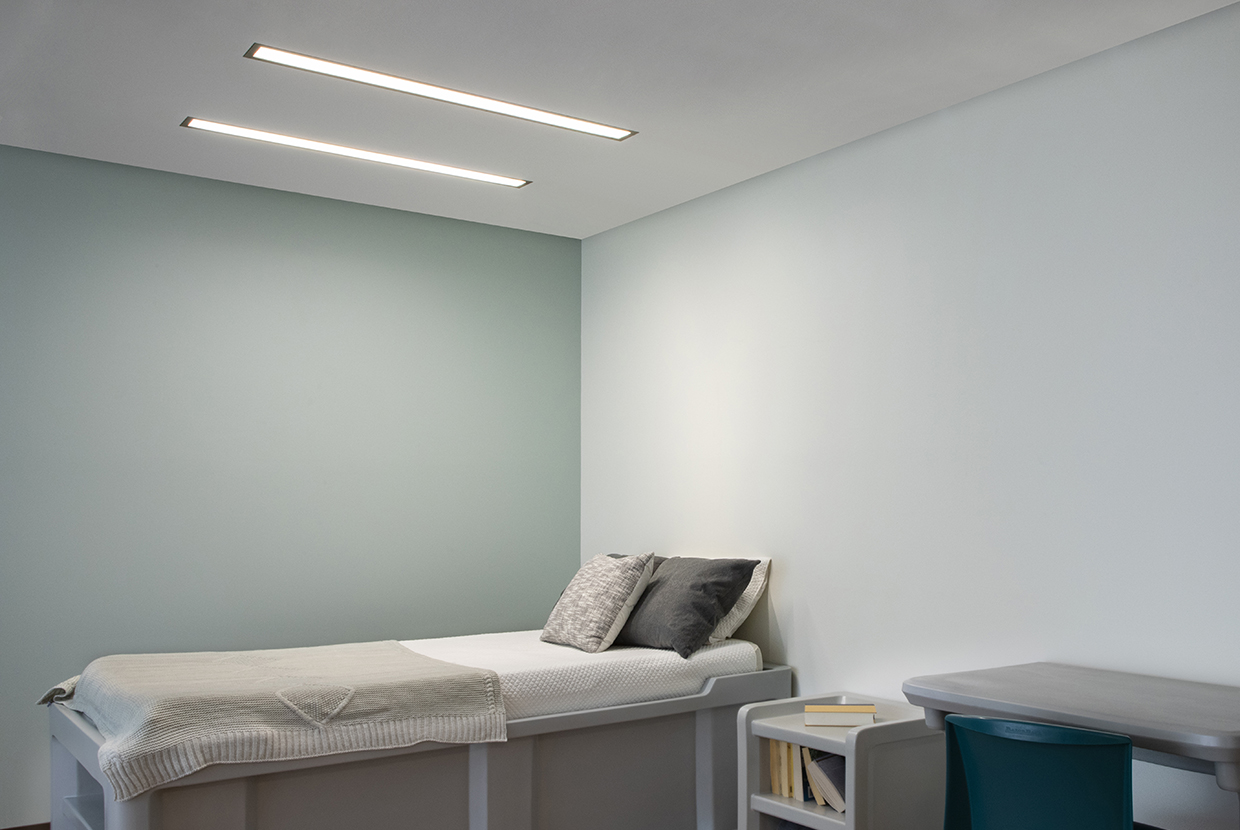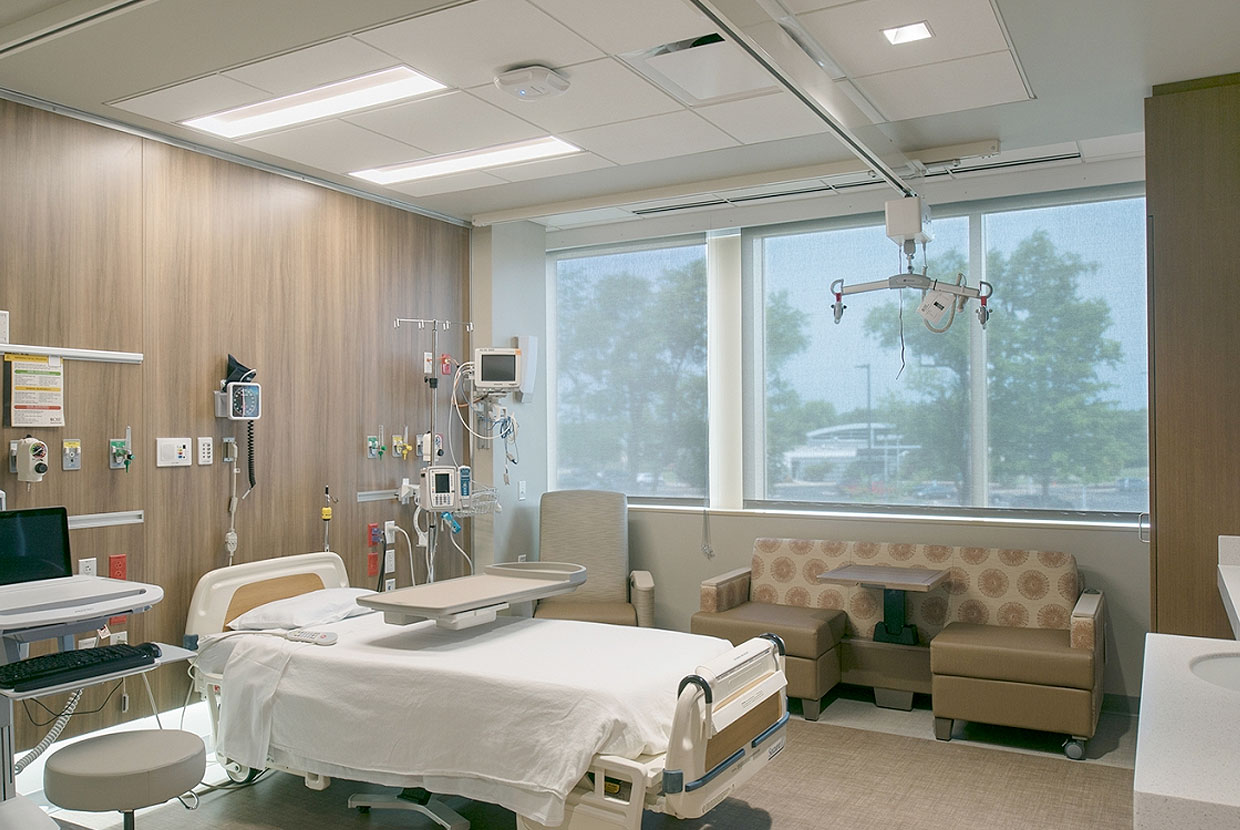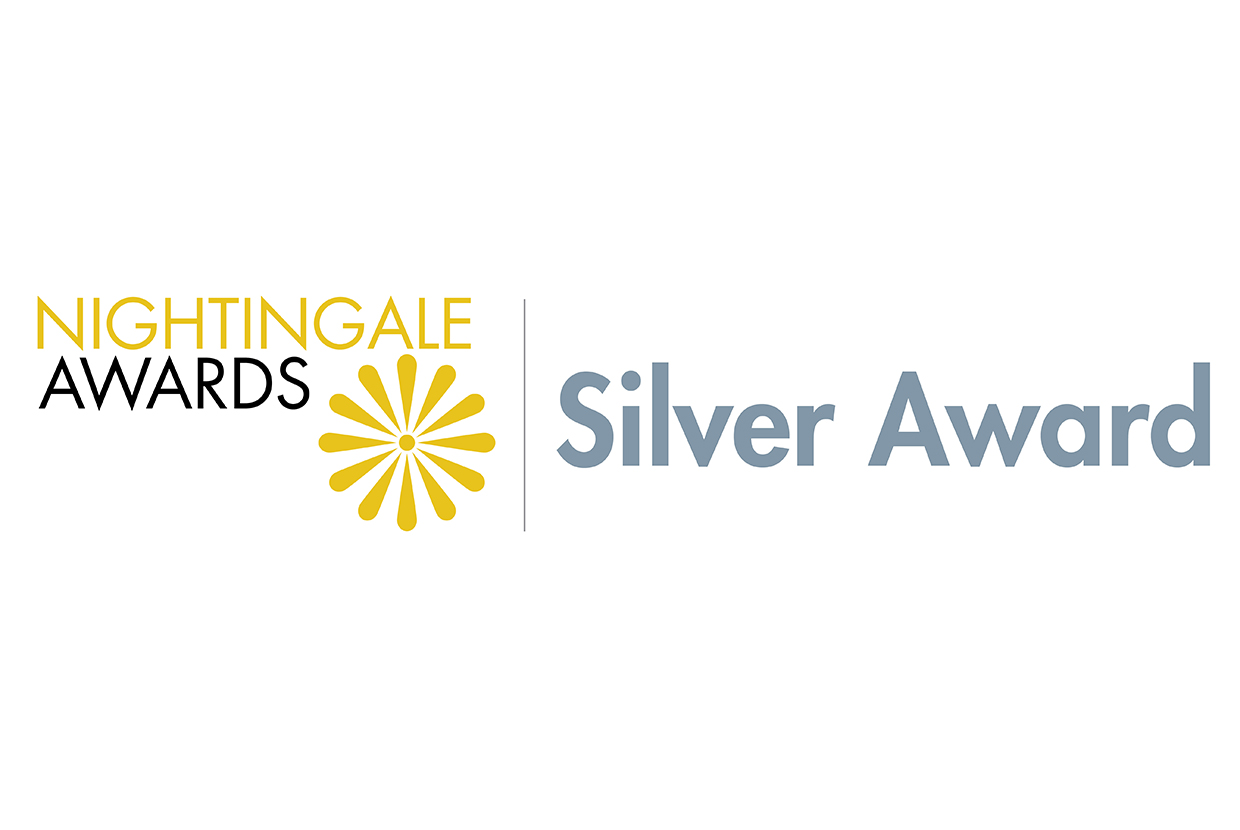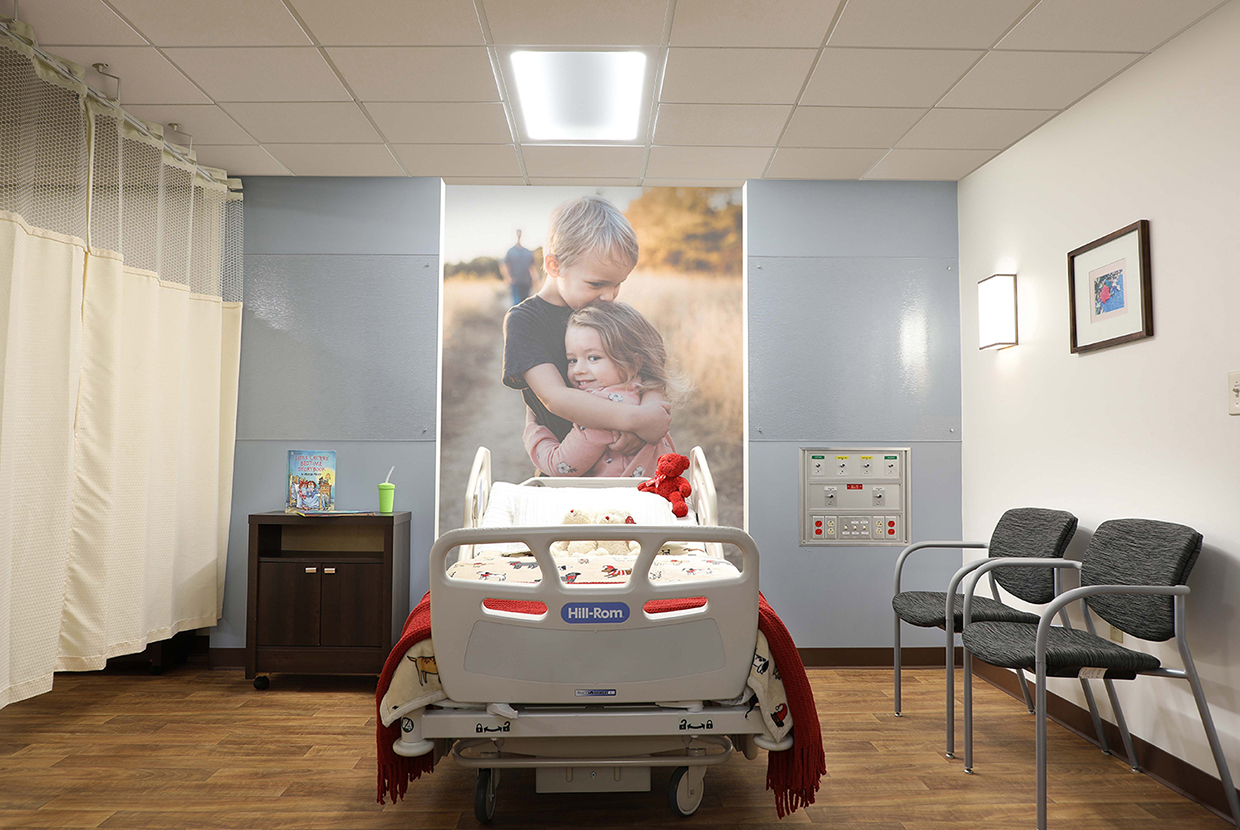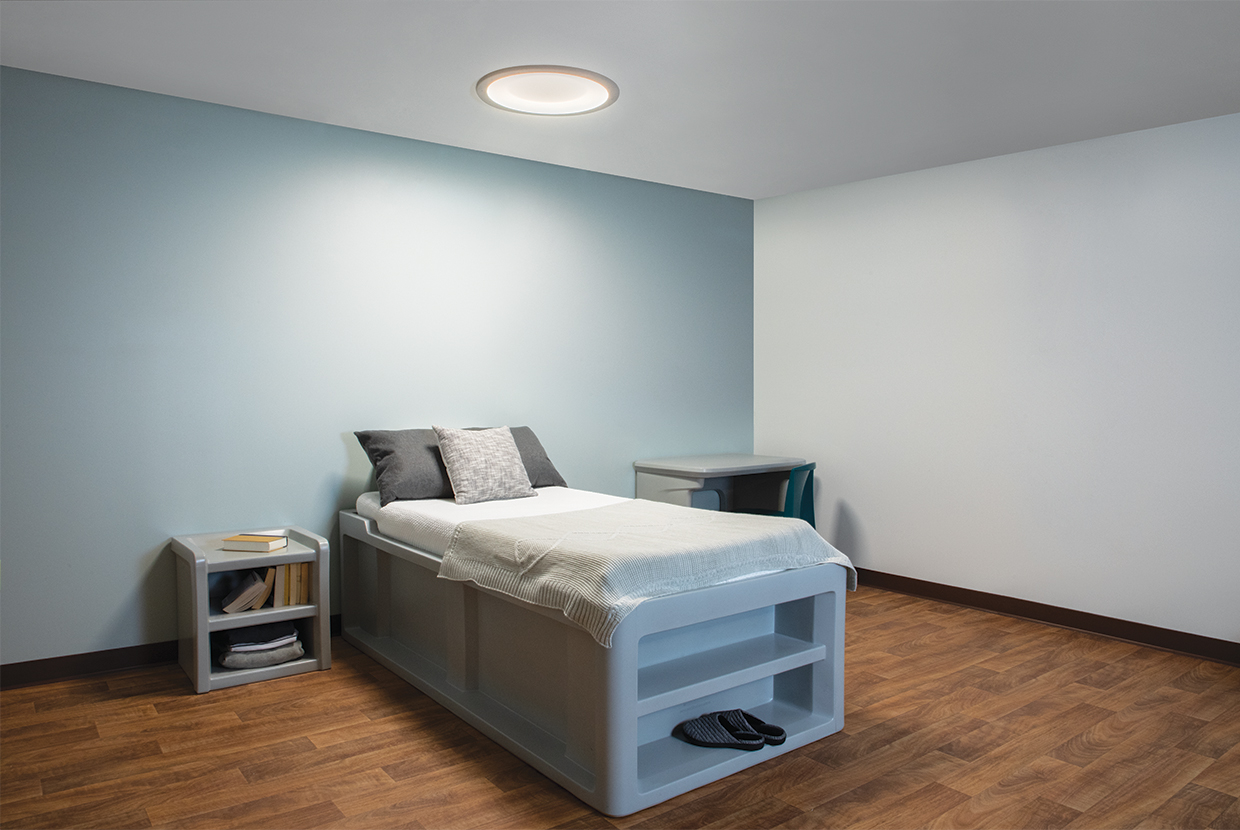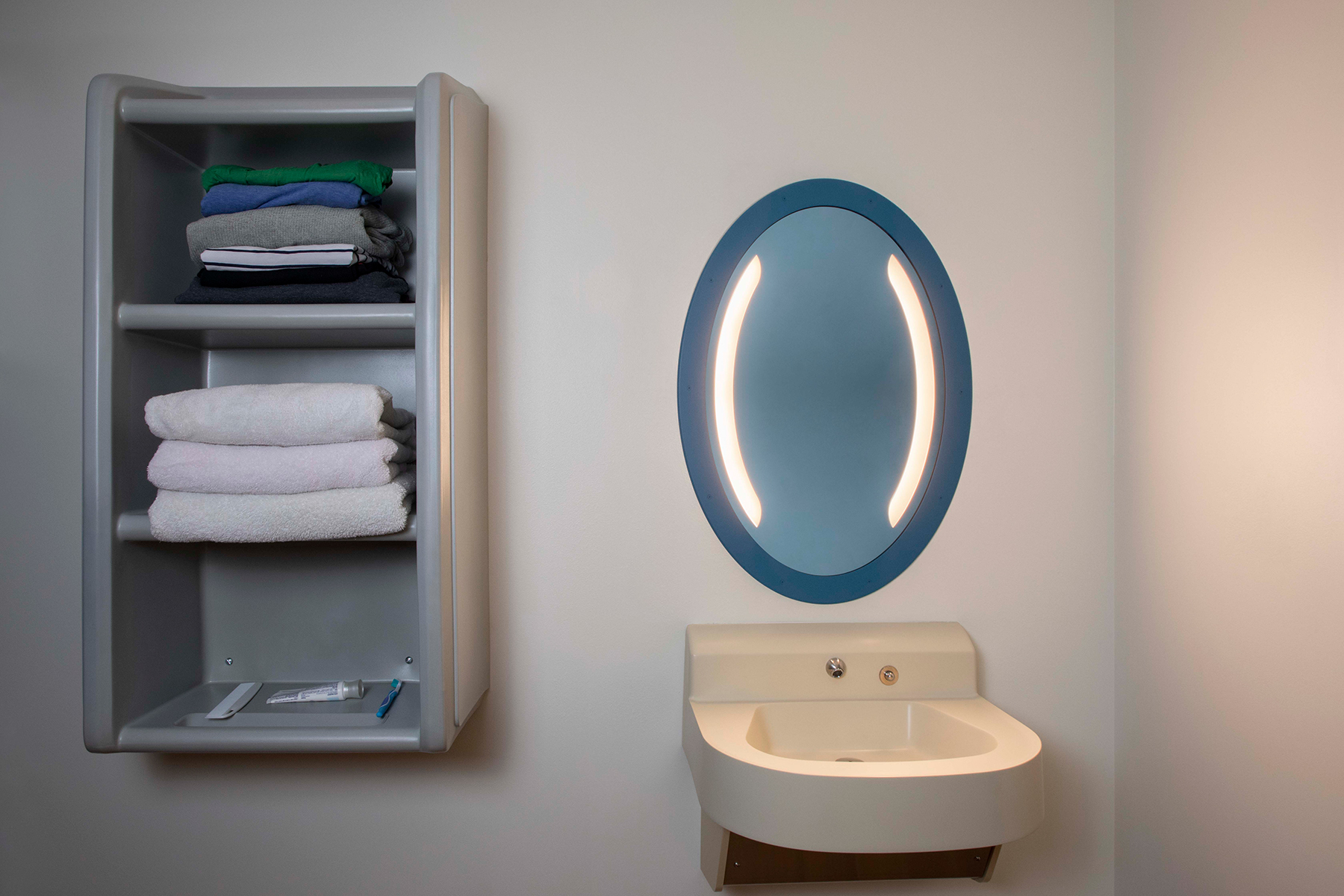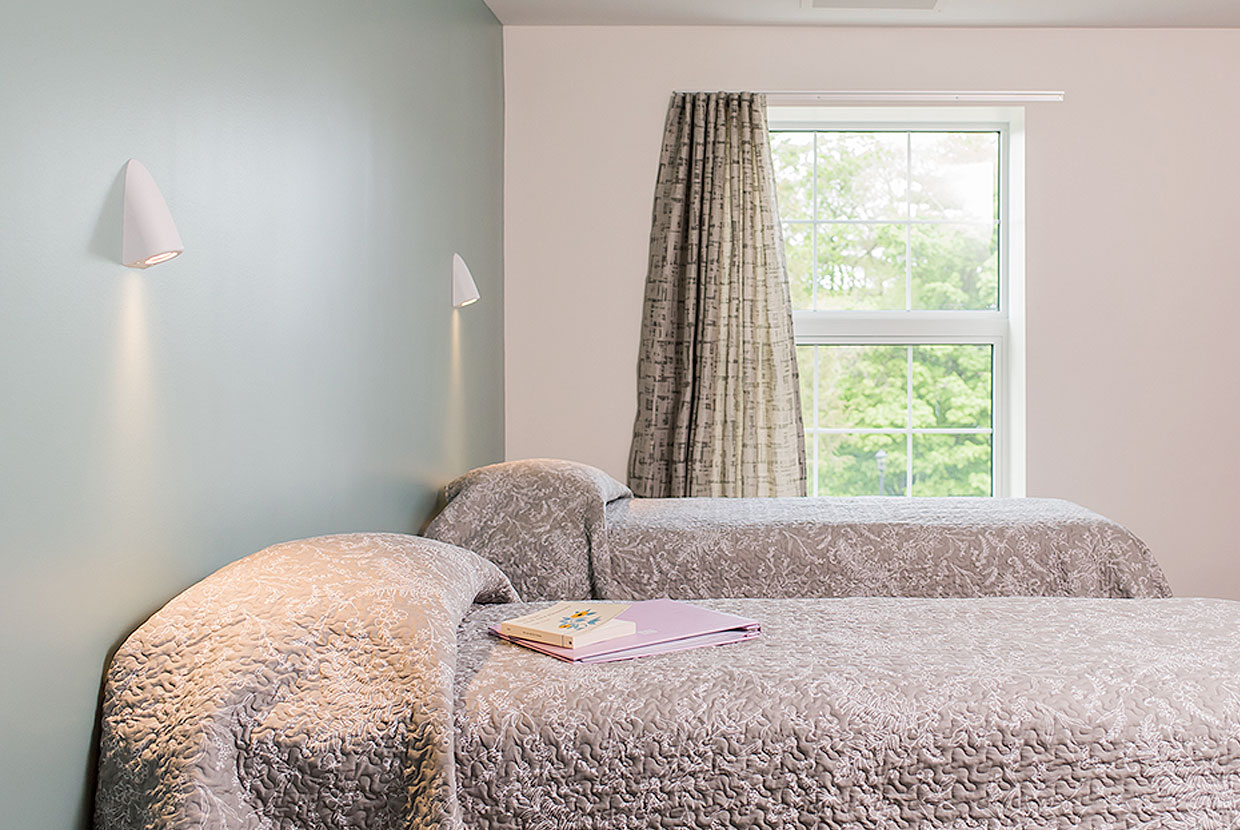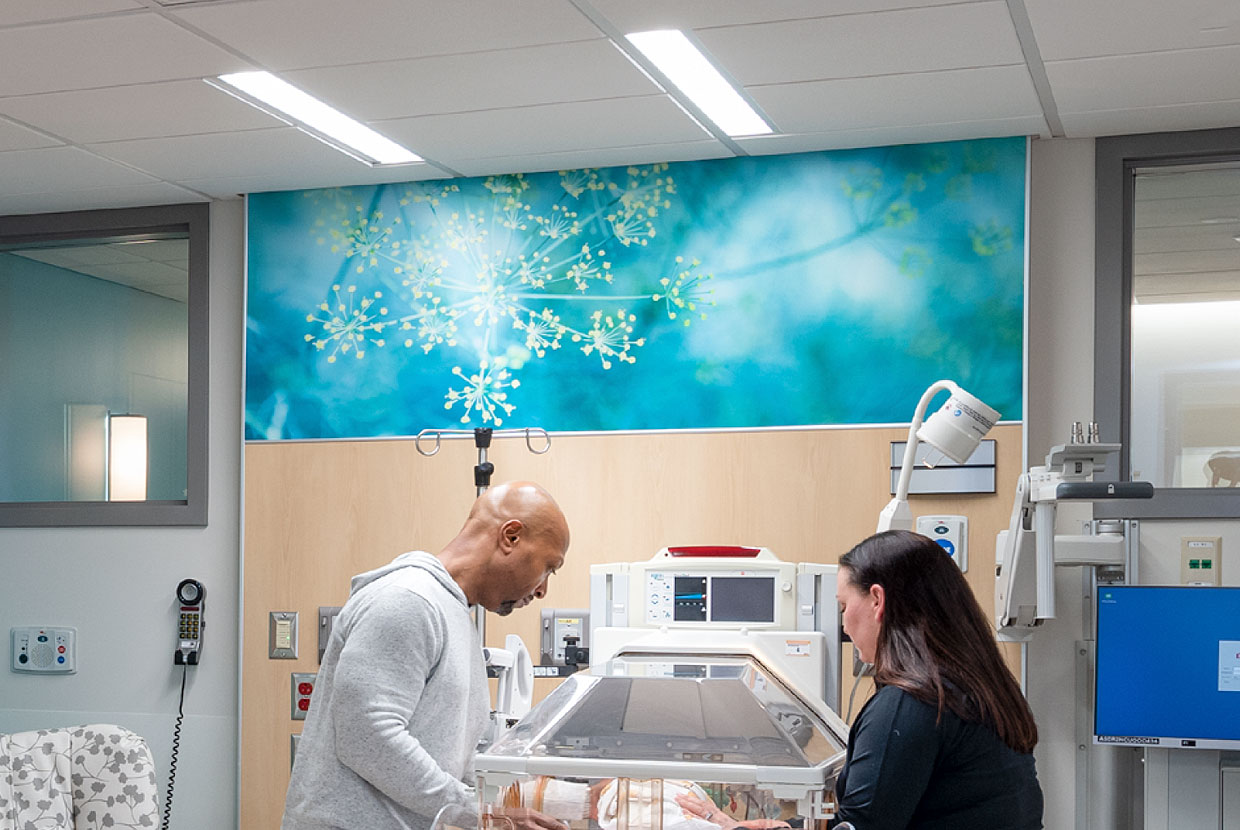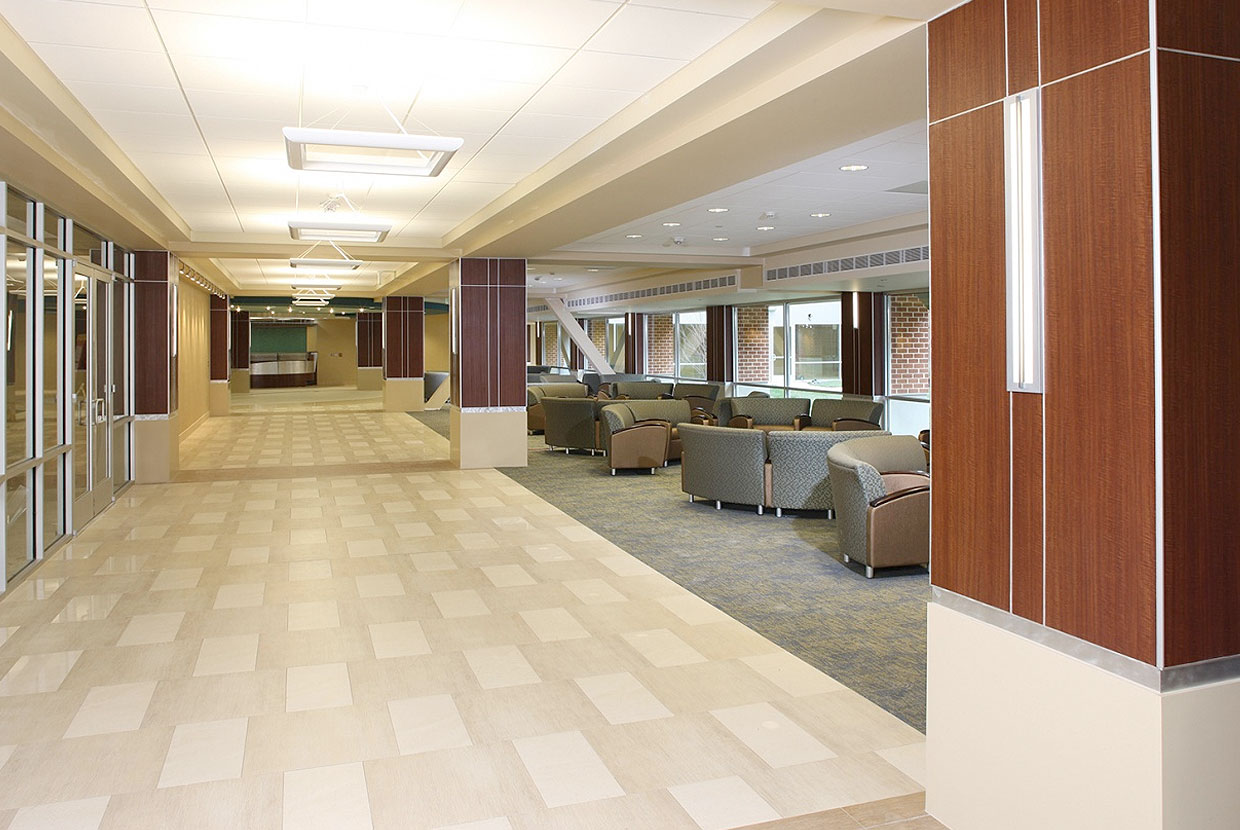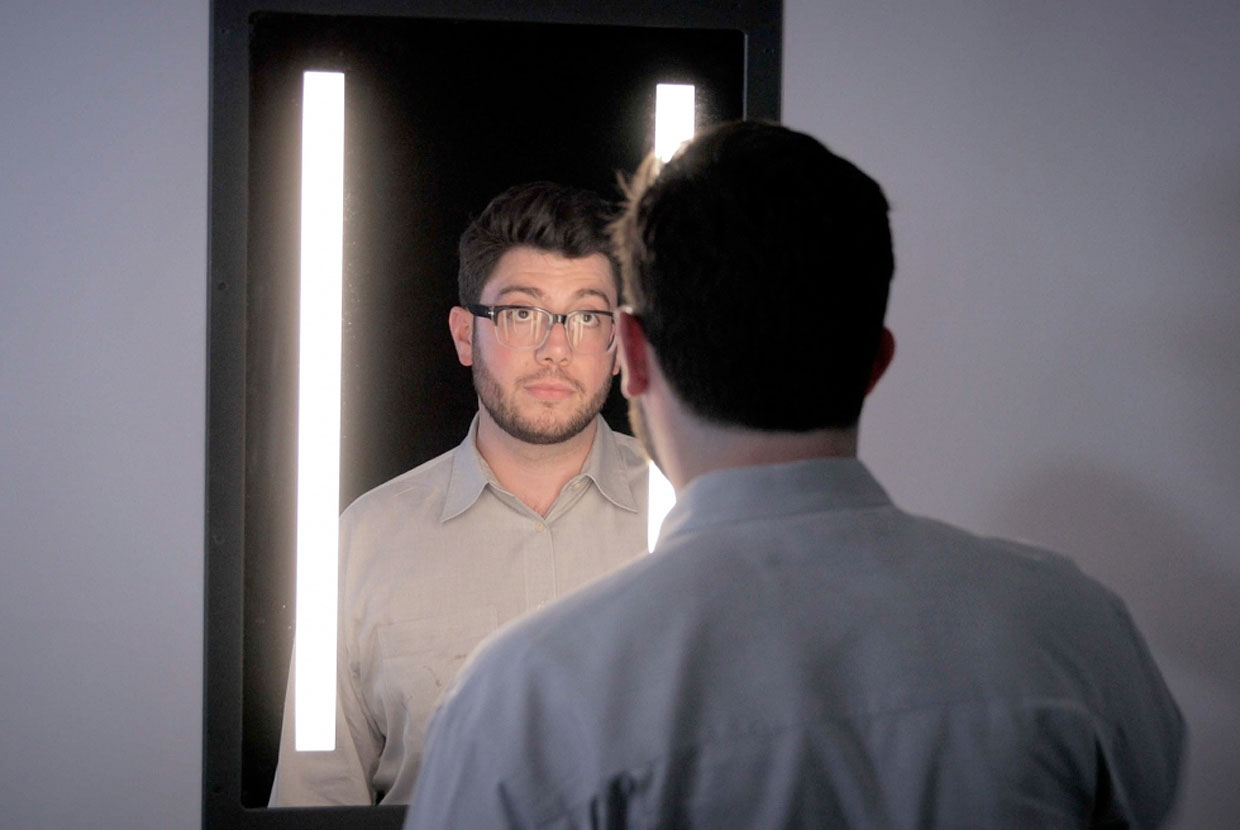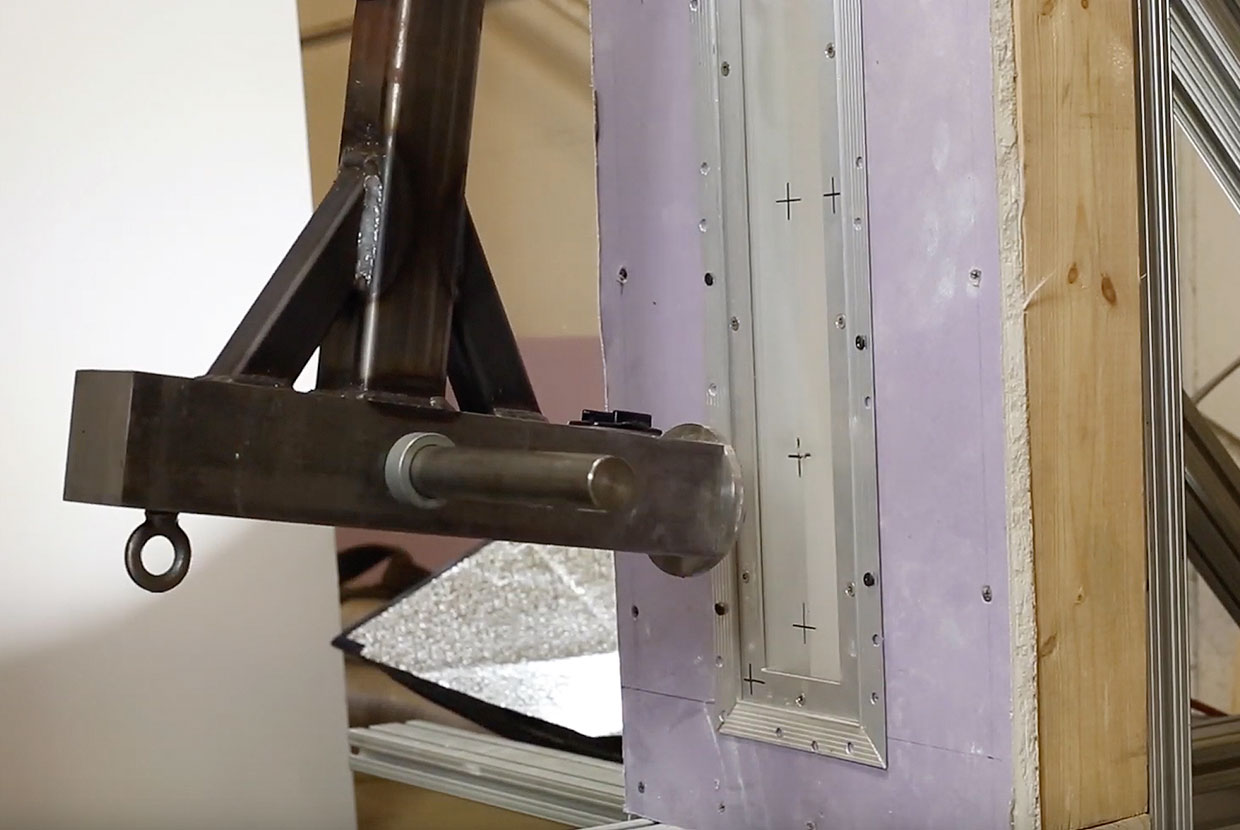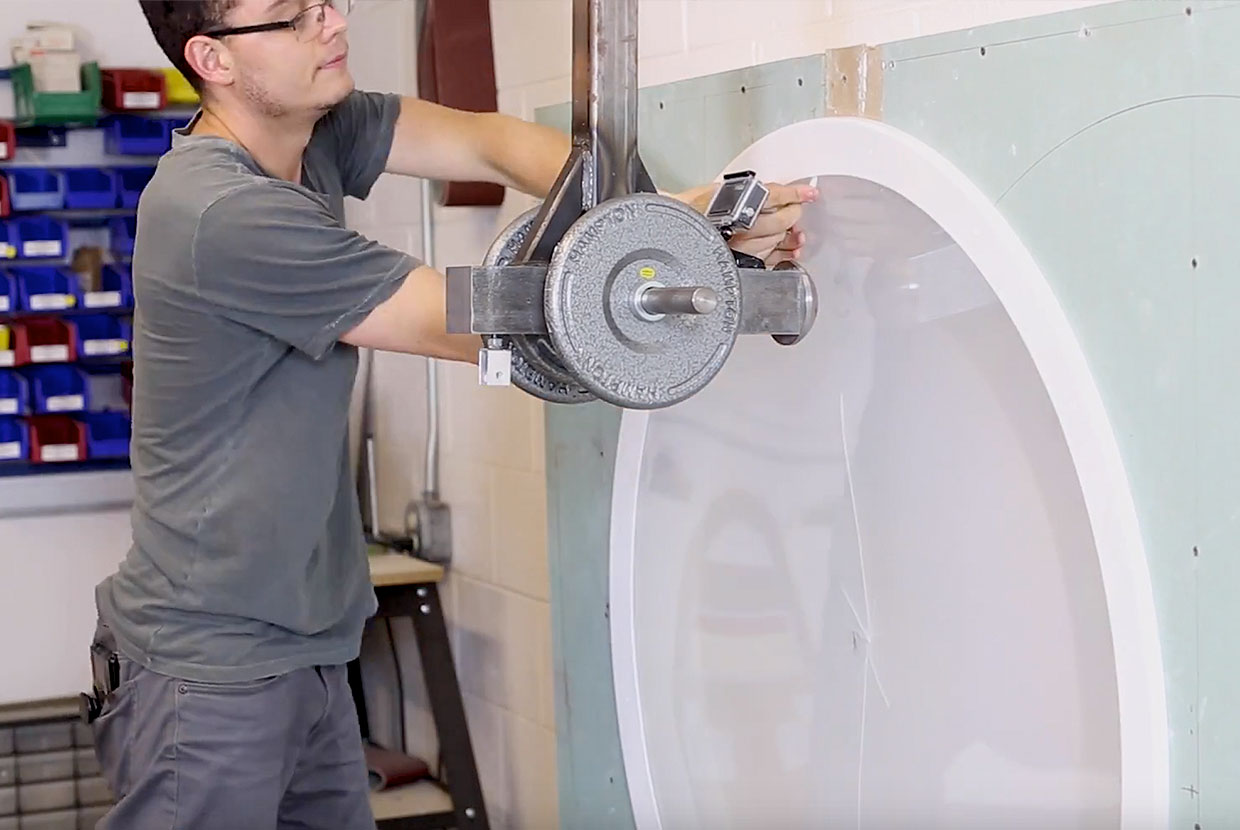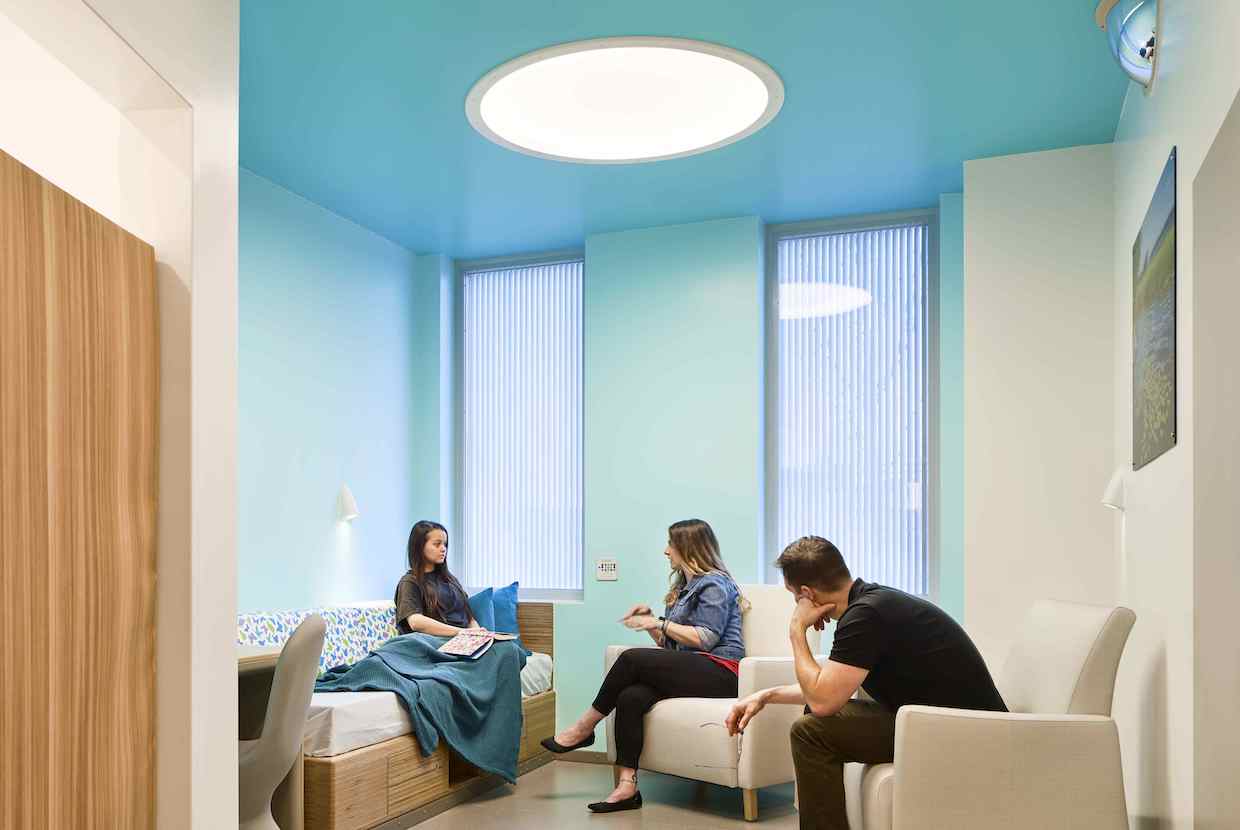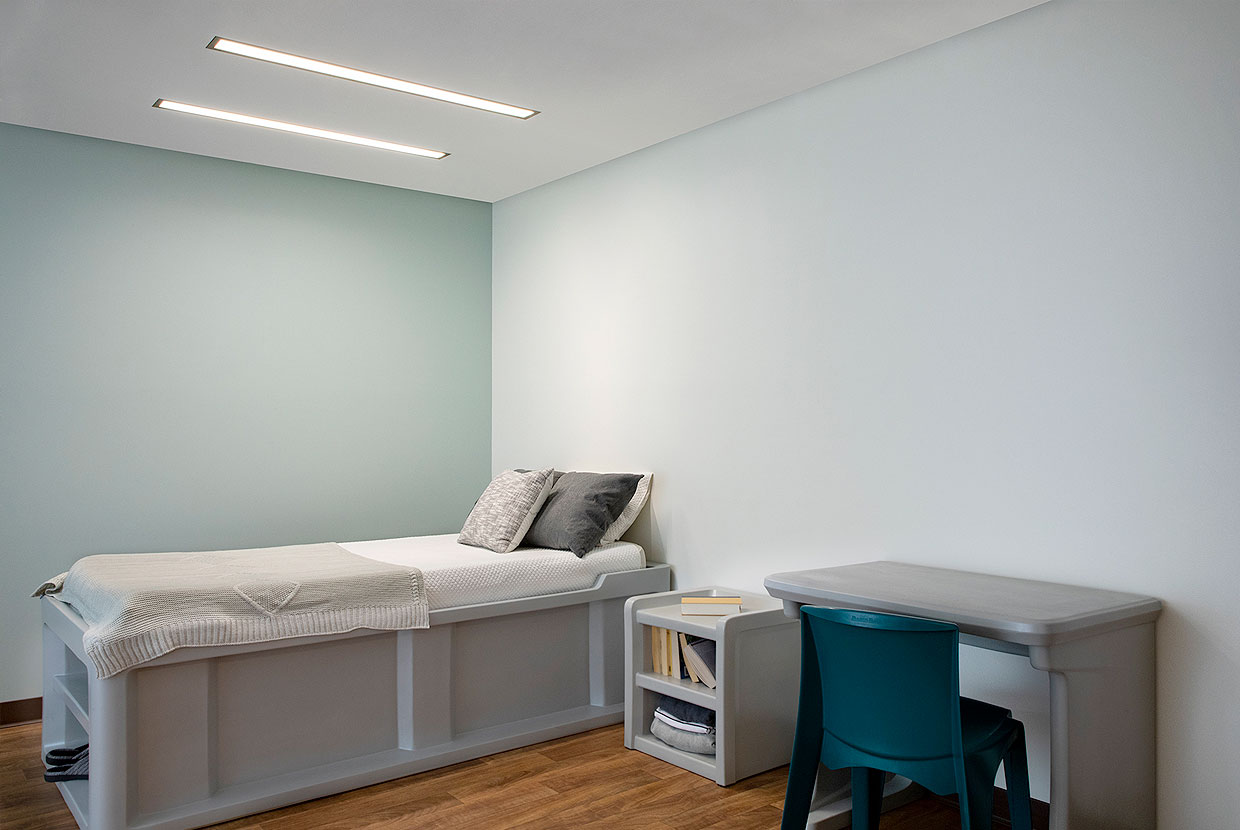BEHAVIORAL HEALTH & HIGH ABUSE LIGHTING
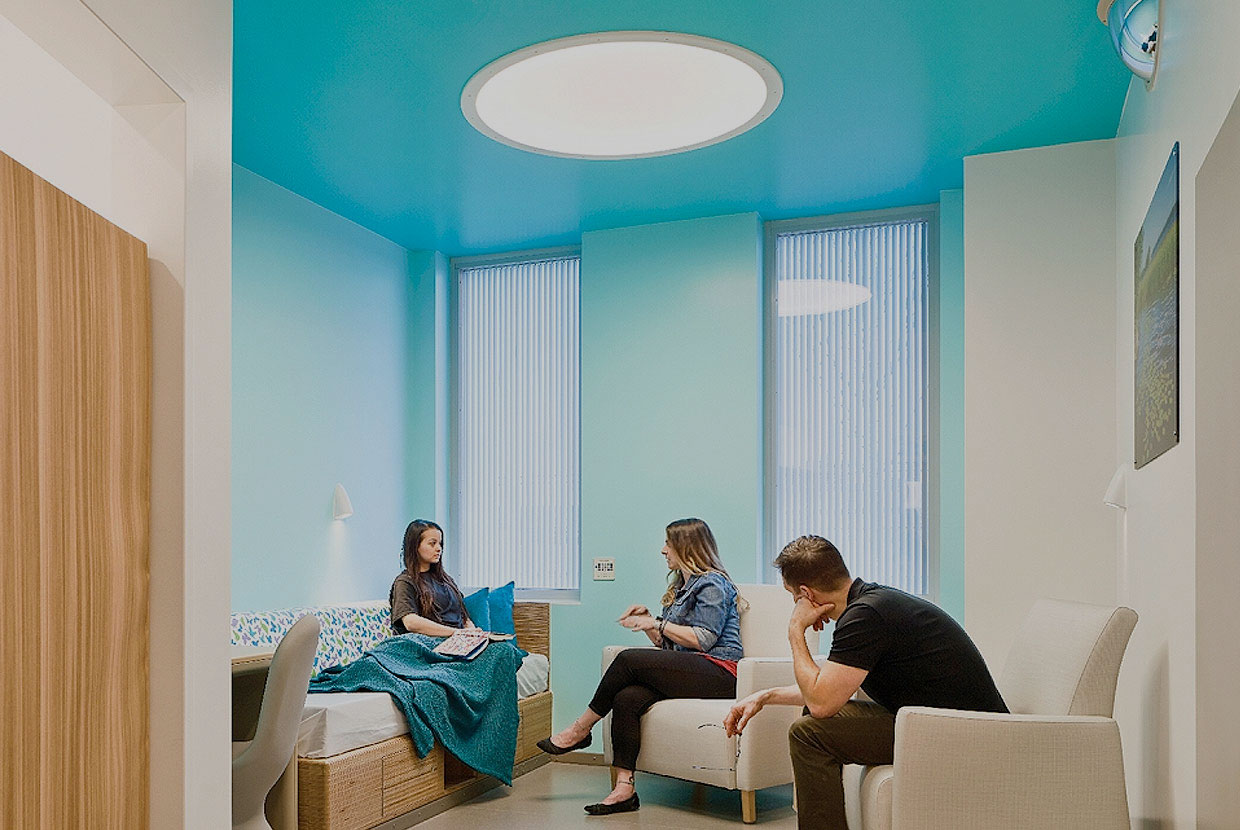
Lighting for Behavioral Health/High Abuse Spaces
When it comes to patient and staff safety, behavioral health/high abuse facilities need light fixtures that are tested and proven to perform to the highest standard in these specialty environments.
Our behavioral health/high abuse luminaires are engineered to meet the rigorous requirements of the New York State Office of Mental Health (NYS-OMH) and other industry recommendations. In the last several decades, behavioral healthcare has evolved dramatically – alongside our societal understanding of mental illness. Treatment objectives have changed from symptom control to patient-centered recovery. These changes permeate every element of behavioral health/high abuse facility design, including lighting.
Symmetry – Patented Lens
- View Product Page
Symmetry Offers 23" and 45" Recessed Ceiling Luminaires
The Symmetry family includes luminaires designed for behavioral health/high abuse facilities which require fixtures to be both safe and therapeutic in design.
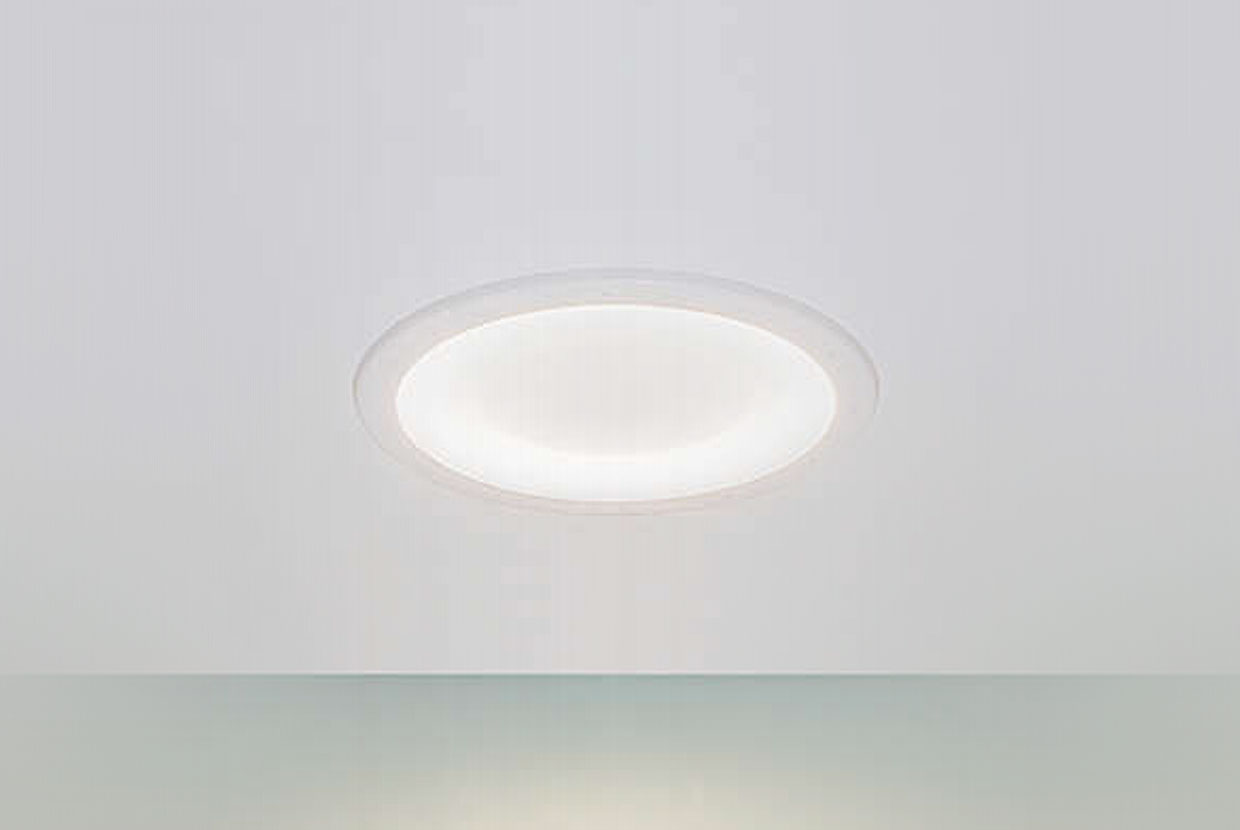 Application Photos
Application PhotosVideo: Symmetry for Behavioral Health/High Abuse
Want to see more beautiful Symmetry photos? Visit the application photos in the gallery.
Gig – Personal Task Light
- View Product Page
The Gig Personal Task Light Has Touch Dimming Controls
This compact task light is designed for patient and caregiver safety. More importantly, is its minimalist, attractive design.
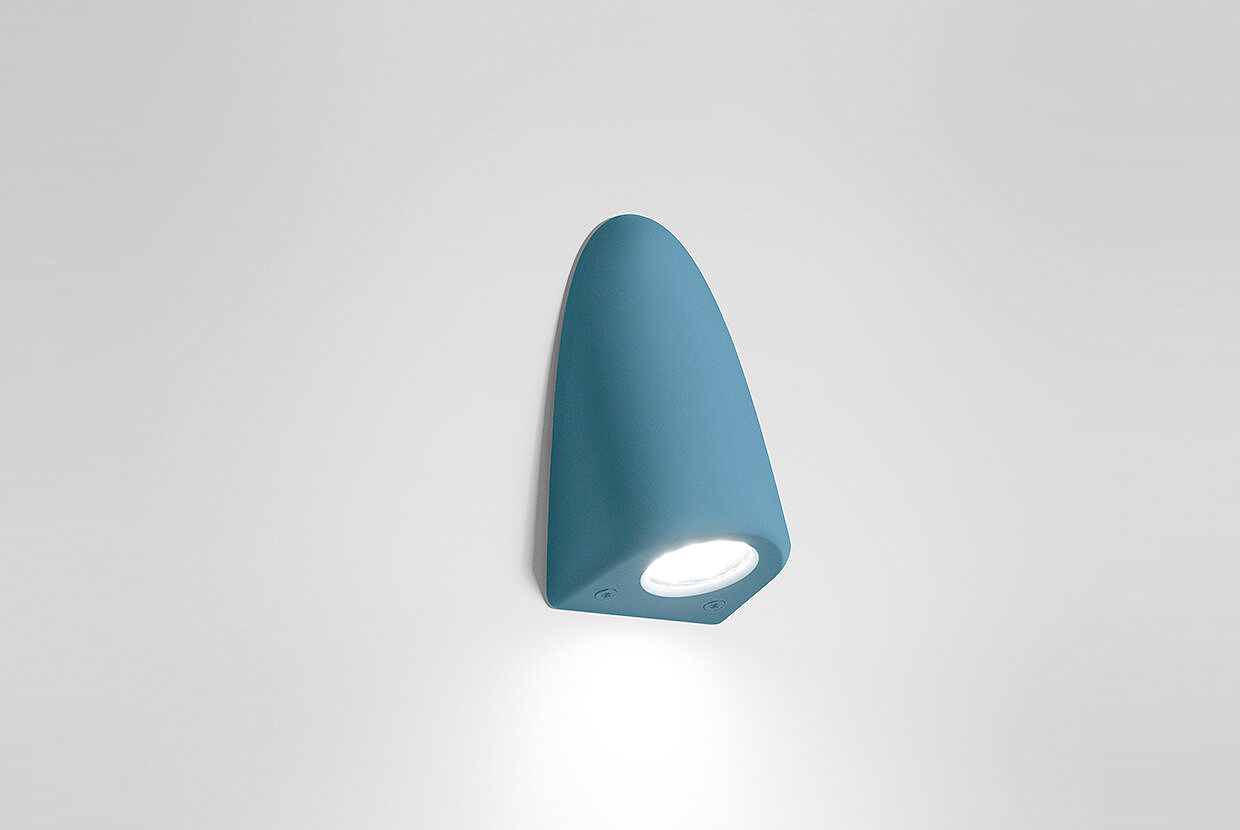 Application Photos
Application PhotosVideo: Gig for Behavioral Health/High Abuse
This compact task light for behavioral health/high abuse spaces is controlled via touch dimming. View more product photos in the application gallery.
Sanibel – Minimalist Over Vanity and Downward Task Lighting
- View Product Page
Sanibel Balances Toughness with Beauty
Visa Lighting’s engineers developed the Sanibel to provide lighting with a clean, modern architectural look, while meeting the requirements for behavioral health ligature and impact resistance. This luminaire features an easily cleaned, die cast aluminum housing with a frosted acrylic lens protected with high-impact resistant clear polycarbonate.
 Application Photos
Application PhotosVideo: Sanibel Stands Up In High-Impact Testing
The impact resistance testing regimen for Sanibel exceeded 100 joules over multiple impacts, and included a ligature resistance test after each impact making this robust luminaire ideal for behavioral health and high abuse setting.
Sole – Illuminated Impact Resistant Mirror
- Product Page
Sole – The First Lighted Mirror Designed for Behavioral Health/High Abuse Applications
With an impact-resistant mirrored polycarbonate and tamper-proof hardware, this mirror is ideal for patient bathrooms.
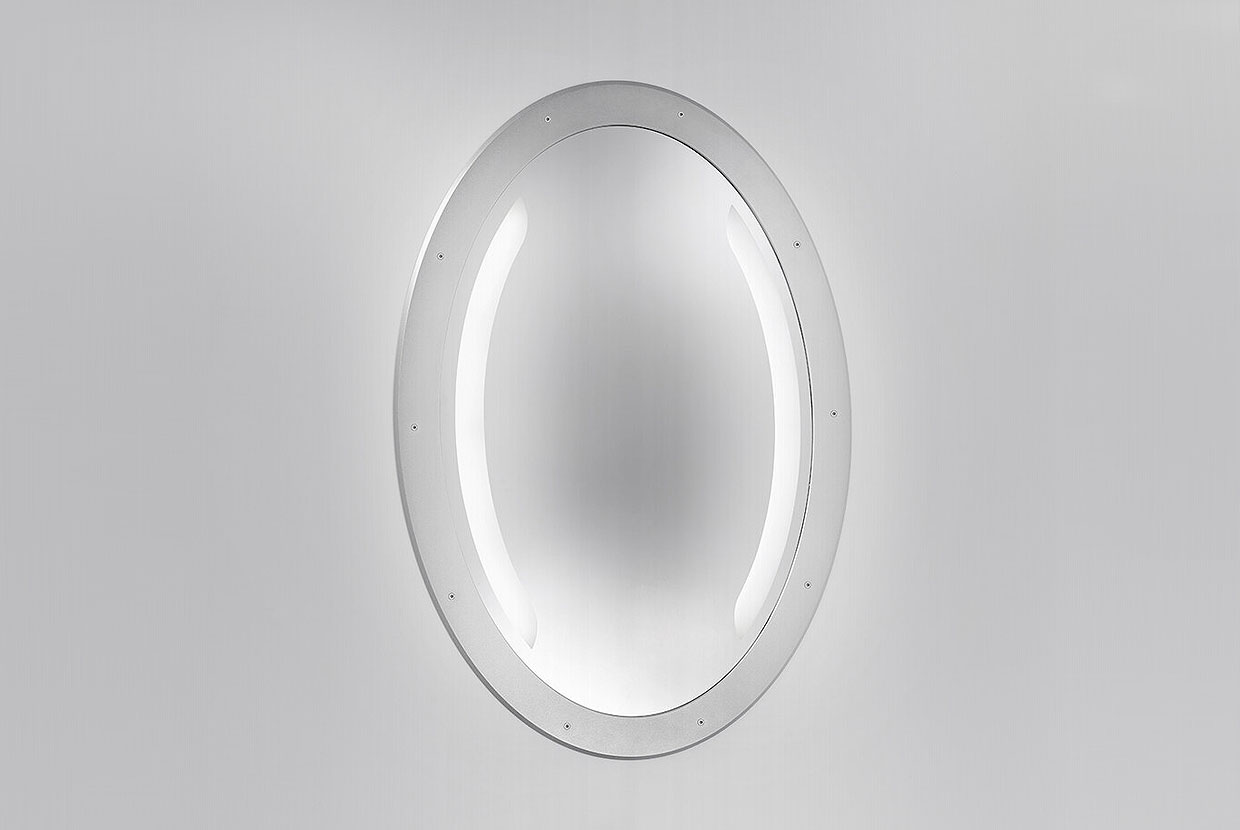 Application Gallery
Application GalleryVideo: Sole for Behavioral Health
The Sole mirror for behavioral health/high impact applications features a mirrored polycarbonate with laser cut-outs for illumination.
Lenga – Overbed Slot Luminaires
- Product Page
Lenga – Recognized as the Industry’s Slimmest Overbed Luminaire
Lenga dual slots are constructed with a coextruded lens to emit exam level light asymmetrically, in order to center above the patient bed without producing glare or shadows.
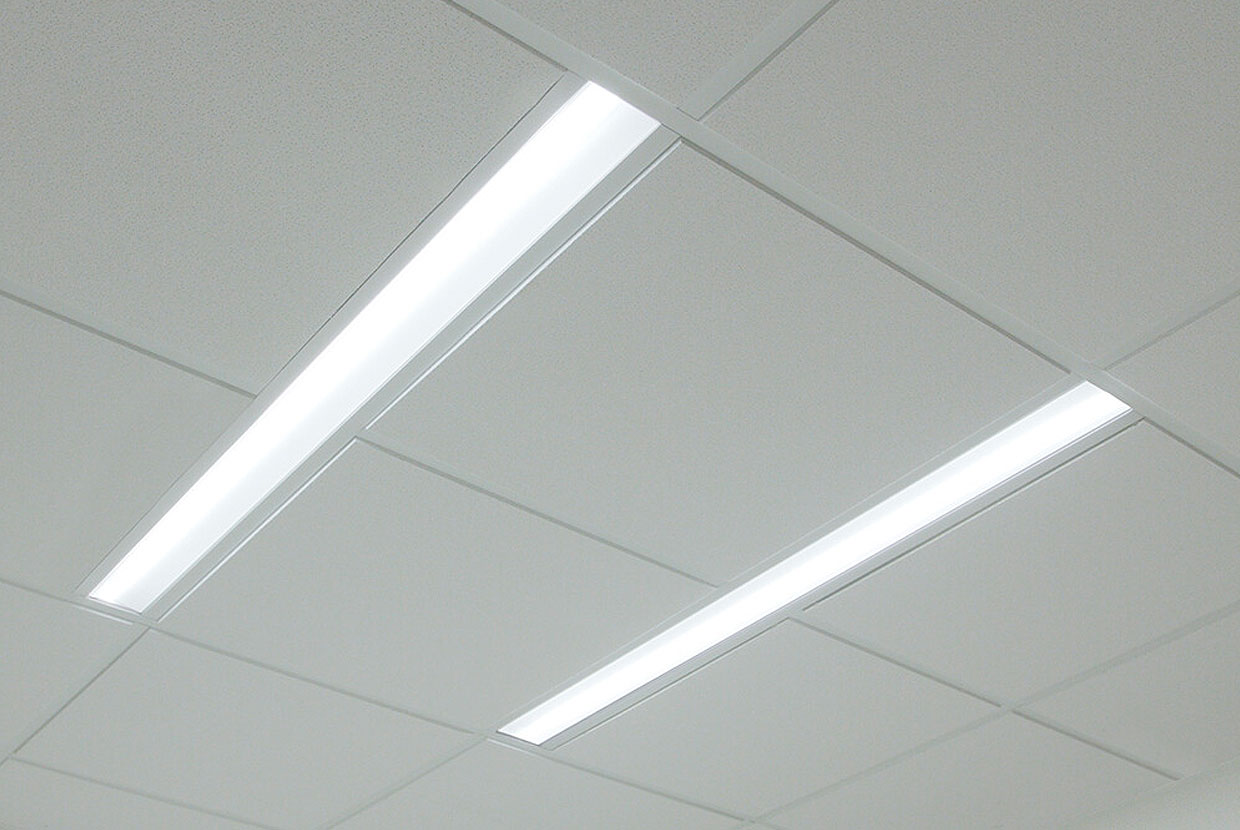 Application Photos
Application PhotosVideo: Lenga for Behavioral Health/High Abuse
Lenga overbed slots now include two models for behavioral health/high abuse applications. View the application gallery to see more photos of Lenga.
Serenity – Perimeter Illumination
- Product Page
Serenity – Designed to Replace 2x2 and 2x4 Troffers
The Serenity family features illuminated diffusers with soft, calming patterns.
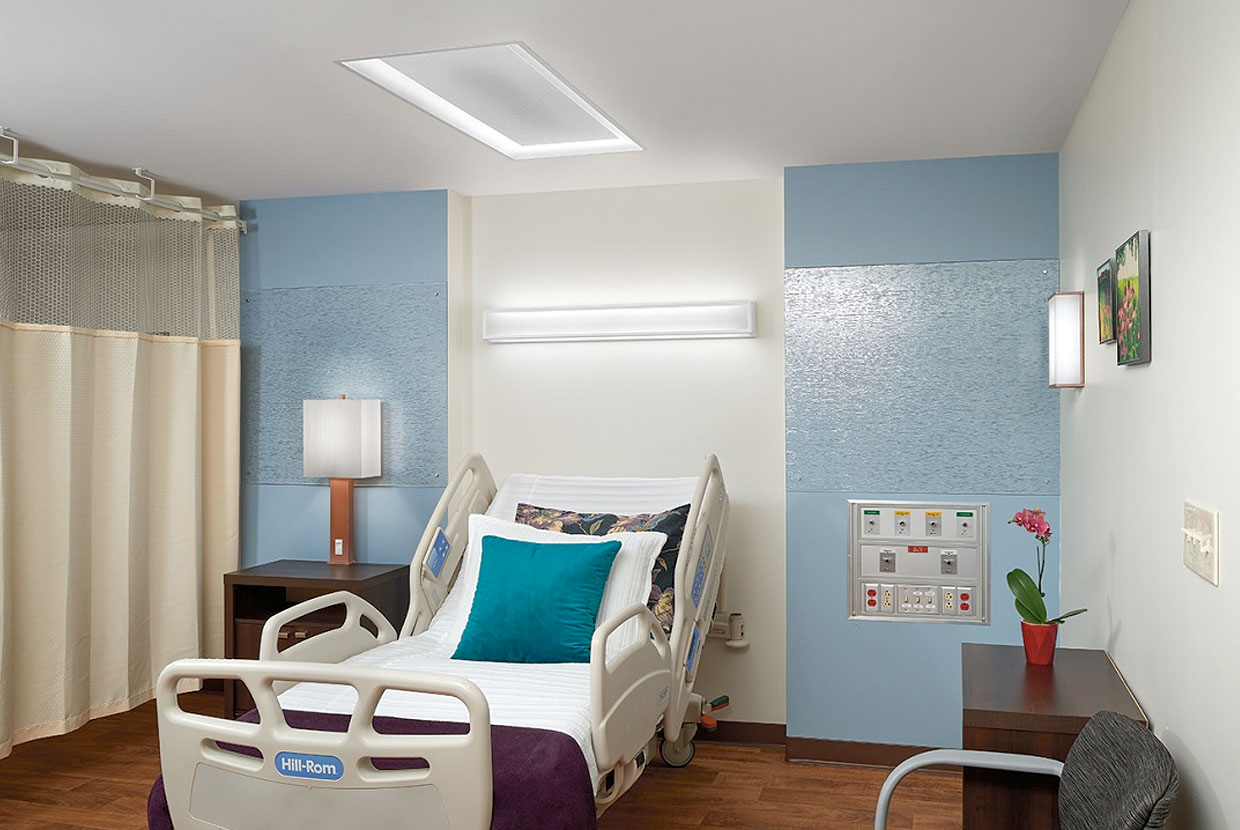 Application Photos
Application PhotosVideo: Serenity for Behavioral Health/High Abuse
Serenity ceiling luminaires for behavioral health/high abuse include a soothing luminous perimeter and diffuser panel. View more of Serenity in the application gallery.
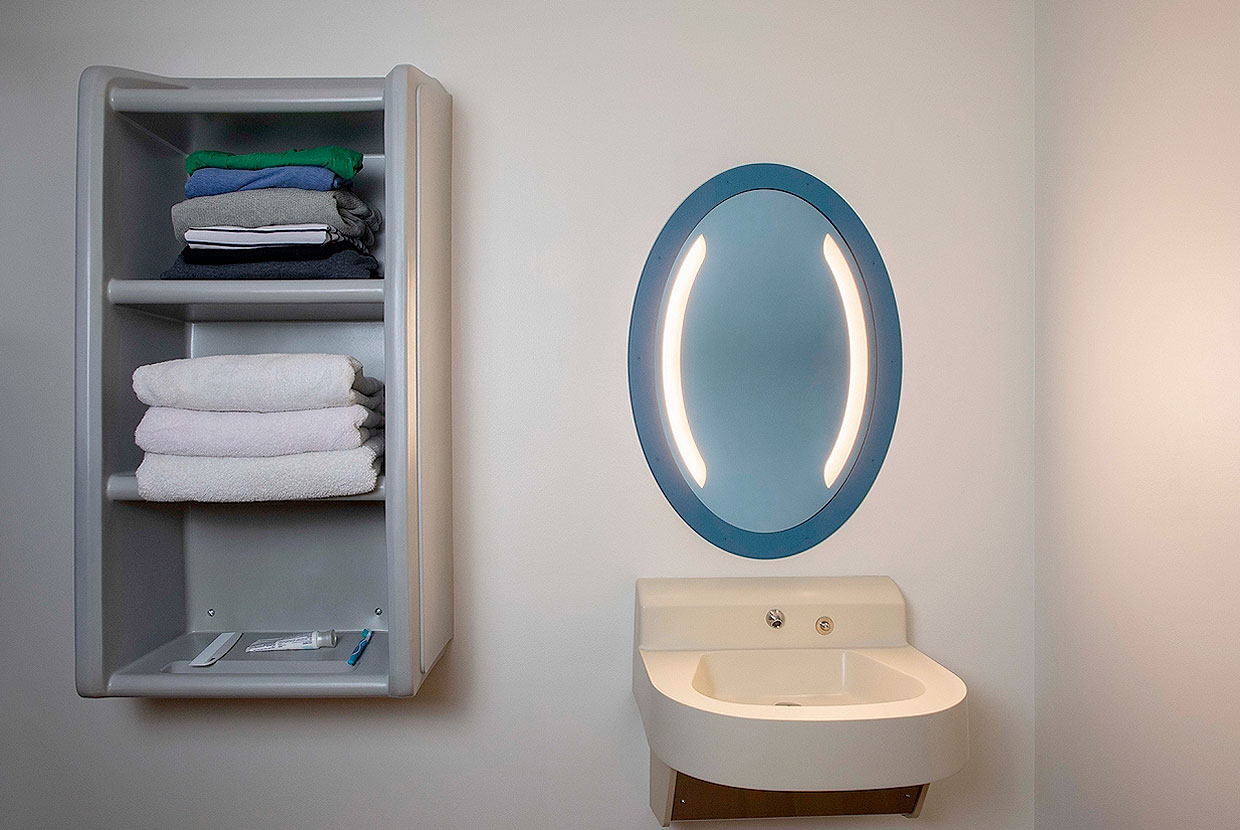
Patient-centered Design
Robust Yet Noninstitutional in Style
The Visa Lighting Behavioral Health/High Abuse lighting collection is engineered to be extremely robust with adequate ligature resistance and tamper-resistant fasteners. However, we also believe it is equally important that these specialized luminaires are beautiful, noninstitutional in style, and produce high quality illumination to best round out the design of patient-centered behavioral health spaces.
Ready to Get Started?
Nightingale Awards
Nightingale Awards: Named after Florence Nightingale, the awards recognize a product’s contribution to the healing environment as well as its functionality, durability, quality, aesthetics, style, and pricing.
Designing Luminaires for Behavioral Health

During product development, we reached out to specifiers of behavioral health applications to discuss their concerns. What we found was that, while architecture and interior design in these spaces have grown immensely in the last decade, luminaire product design has lagged behind the innovative curve. We sat down with specifiers to work together on new concepts that could match up to current aesthetic, performance, and safety standards.

